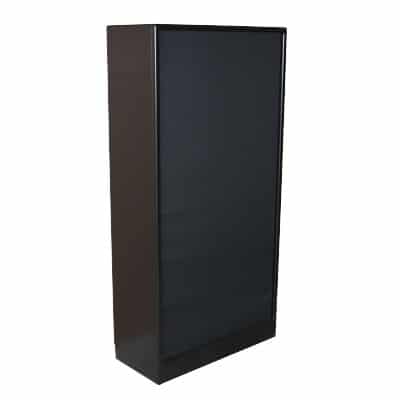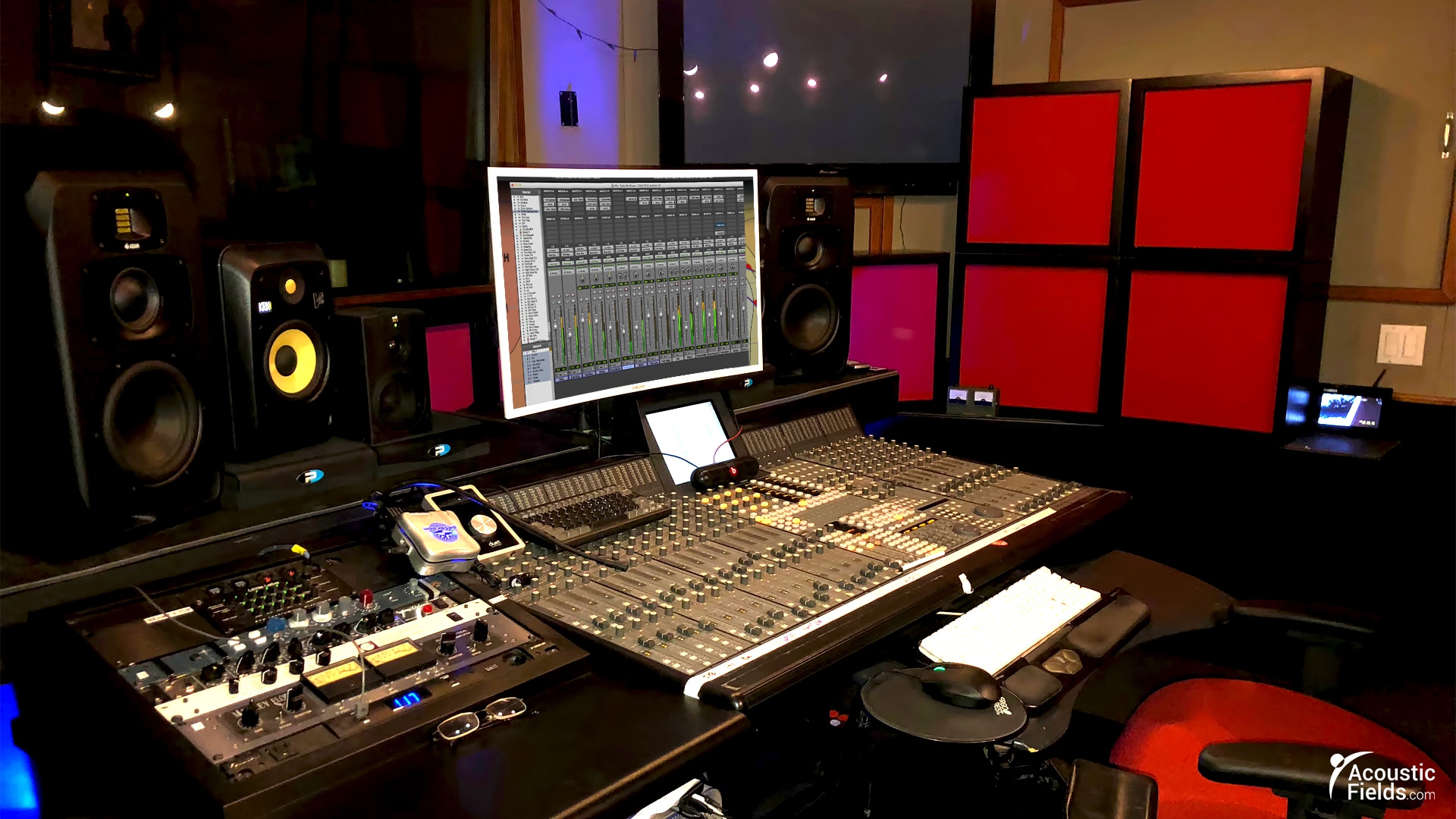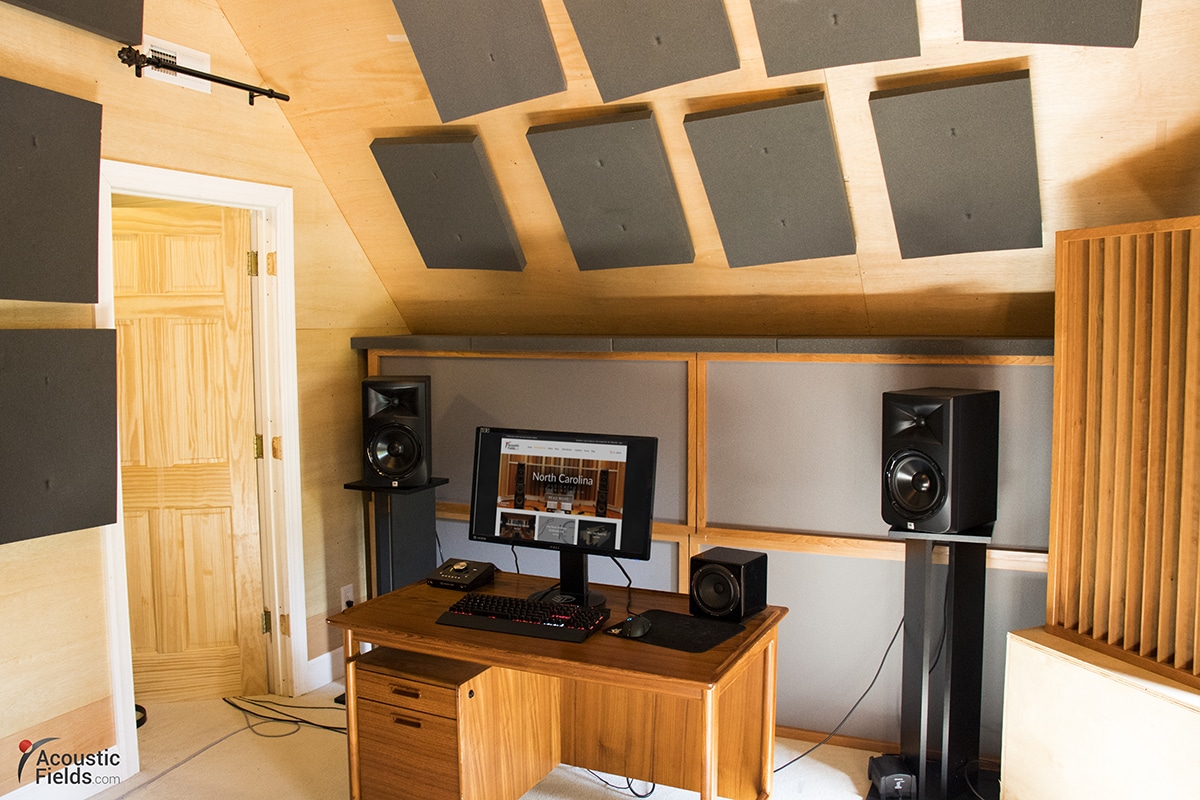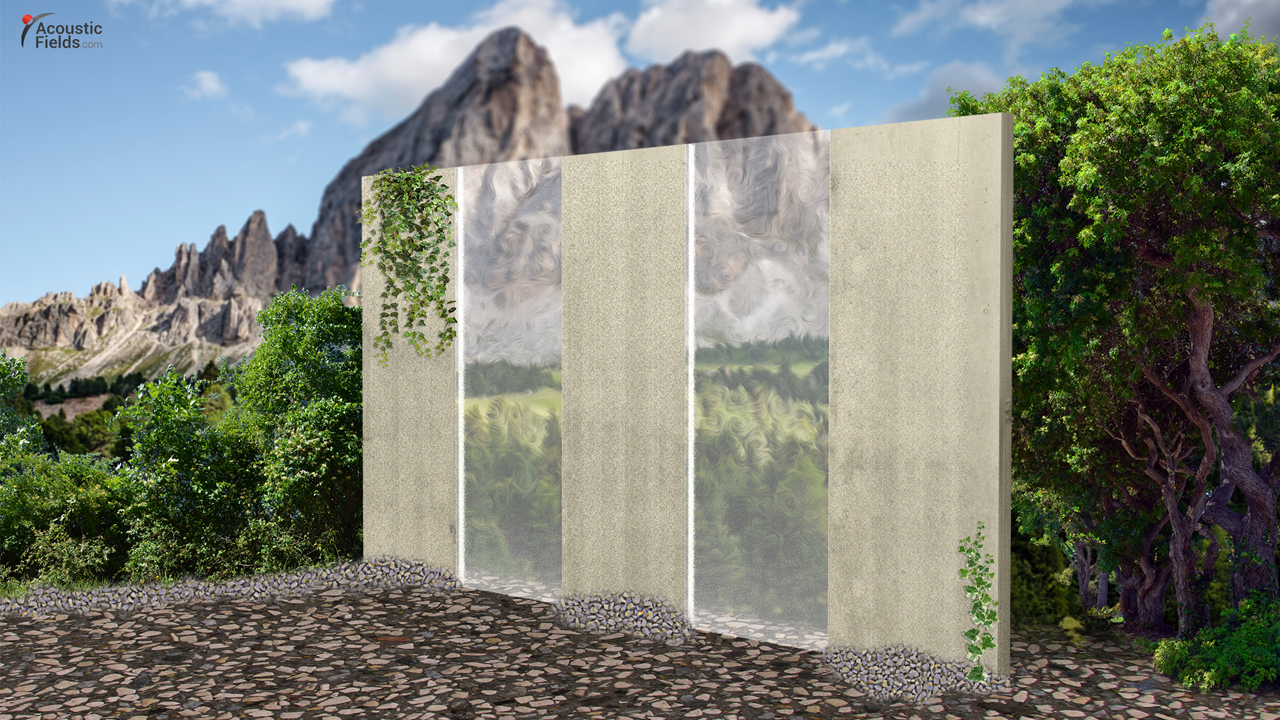In last weeks Acoustic Treatment Google Hangout I was asked what acoustic treatment for drums I would recommend. Well drums are high energy-producing devices, I mean the bass drum. I saw a bass drum the other day it was 24 inches across. So this is a very high energy-producing device. Lots of pressure generated at low frequency, so you really have to manage the room correctly here.
Good drum sounds, I just think back to Bonham’s drum sound with Led Zeppelin, they always got great, big drum sounds to matches a big 24 inch bass drum and thick sticks.
So drums and the recording of an album are a balance between the room and the drums because there’s really no amount of treatment that you can put in the room which will minimize the room sound completely when it comes to drums. They’re just such a high pressure producing source so we have to compromise and live with balance when it comes to drums.
Microphone positioning and treatment are critical for drums
Now that said, you can get some great drum sounds out of rooms and microphone positioning and room treatment in the room is critical. You have a sound producing device that can go as low as forty cycles. So your room treatment has to reflect that forty cycle energy through its dimensions, through its room treatment, through its volume, all of these issues have to be addressed.
It’s a balancing act with drums, it’s always a balancing act between the amount of energy that the drum is producing and the amount of energy the room can handle and if the engineer is unhappy that there’s too much room well then you know, those issues have to be addressed.
Activated Carbon Drum Platform
We’re actually building a platform with our carbon technology for a drum situation in a studio and it’s about ten foot by ten foot and the drummer’s actually going to sit on that platform which is designed with our ACDA 10 technology in the platform.
The carbon inside the ACDA units is going inside these drum platforms.
The studio owner is smart. He realizes that to manage the energy produced by the sound producing source and energy-producing source, the drums, you need to have the pressure-reactive technology that manages that energy as close to the source as possible. So it was his idea. He said “well let’s just build a platform and set the drums on the platform”.
So this is going to be really interesting as we’re going to get a lot of control right at the source and that has to be good for the room and it has to be pretty good for the microphones too. Less pressure at the microphone position is going to produce a different sound.
It’s a really small room so the room sound is just going to completely take over without treatment, so we want to minimize the pressure in the room and we put the platform right underneath the drums and we have the option, with both side walls, to do the same thing. We’re going to just take it one step at a time and start with the platform.
We’ll do a video on that for you drummers out there, because this is very cool stuff. When you play the drums, you will be able to hear yourself much better because the pressure will be reduced right where you are sitting so you’re going to be able to hear a lot more of your drums. Irregardless of the room size, if this works out the way we think it’s going to then it’s going to be great. Fun stuff, new ideas, new technology and better sound that’s what we’re trying to get.
The Drummer is the engine of the band
The drummer is very important to the band. He is the engine, he’s the one that kind of controls the speed of the band, the rate level of the music. He can act like a runaway train and keep getting more excited, increase the speed of the train and then everybody will crash eventually or he can stay systematic, in time and control everybody else, the guitar player, the bass player, he can set the stage for them.
So his ability to hear more of what he’s doing, to me as an acoustical engineer, is just common sense. The more he hears, the better he plays and the better he plays the better the band sounds. So I think these three things all work together. I’m excited about this project. I think it may evolve into a design that we use as an acoustic treatment for drums and drum rooms so it’s going to be an interesting experiment.
Same application for rehearsal rooms, small venues and drum stages?
Any place where the drums are producing more pressure that the room can handle needs acoustic treatmet. I mean have you ever gone into a room that the drummer is in and said “Oh I can’t hear the room, all I hear is the drums”. No, I can’t think of any room I’ve ever been in, from small venues to large concert halls. You’re always hearing the rooms.
I think this design of attacking the pressure and dealing with the pressure close to the source, using the appropriate technology, this pressure-reactive technology will work. You can’t use foam and boxes filled with building insulation, i.e. bass traps, that’s not going to cut it for drums or any real low frequency energy. I know this is what companies tell you out there but it’s not true.
You have to match the technology with the physics of the problem. You can’t make the technology fit the physics, the physics has got to fit the technology.
In Summary
I hope this discussion on possible acoustic treatment for drums was helpful. Please leave any comments below so I can get back to you. Don’t be afraid to hit those Facebook like, Google+ and Twitter buttons on the left hand side so other people can see this post. And if you want to learn more about this subject please sign up for our free room acoustic treatment videos and ebook which provide step by step instructions. Get instant access by signing up now.
Thanks
Dennis








